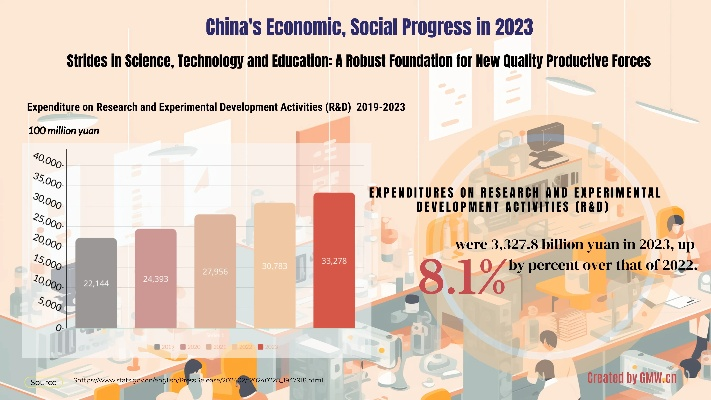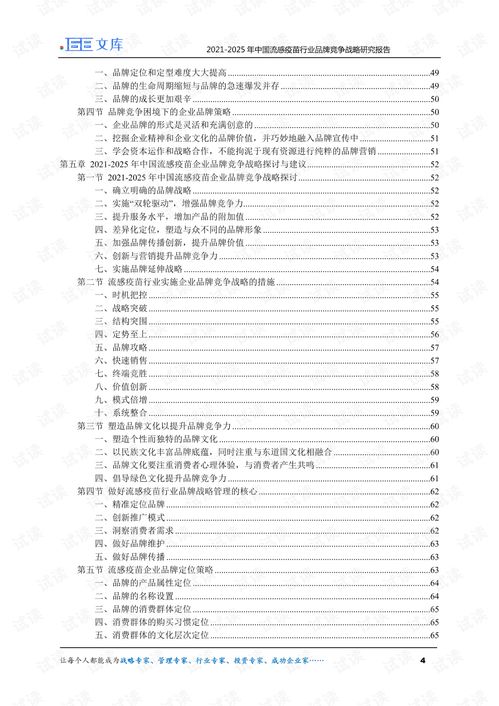Global Trade Trends in Textiles:An Analysis of the Industrys Future Prospects
Global trade in textiles has undergone significant changes over the past few decades, driven by factors such as economic growth, technological advancements, and changing consumer preferences. The industry has experienced a shift towards higher value-added products, with an increasing focus on sustainability and ethical production practices. This paper analyzes the future prospects for the textile industry, highlighting the potential drivers of growth and the challenges that may hinder its progress. The analysis takes into account the impact of global economic conditions, regulatory frameworks, and emerging technologies on the industry's performance. The study concludes by suggesting strategies for enhancing competitiveness and fostering sustainable growth in the textile sector.
Introduction: The textile industry has been a cornerstone of global trade for centuries, with its products ranging from basic clothing to high-end fashion accessories. The sector is characterized by its diversity, adaptability, and continuous innovation, which have made it one of the most dynamic industries in the world. In this essay, we will explore the current state of the textile industry, highlighting its key trends, challenges, and opportunities. We will also present an illustrative case study to illustrate how these trends are shaping the future of the industry.
Current State of the Textile Industry: The textile industry is highly competitive, with companies operating in various segments such as apparel, home textiles, and industrial fabrics. The industry is characterized by its low barriers to entry, making it vulnerable to changes in consumer preferences and market conditions. However, the sector is also facing several challenges, including rising costs, environmental regulations, and technological advancements that are reshaping the industry's landscape.
Key Trends in the Textile Industry:

-
Sustainable Practices: The demand for sustainable textiles is on the rise, with consumers demanding more eco-friendly and ethically produced products. This trend is driving manufacturers to adopt more sustainable practices, such as using renewable materials and reducing waste. Companies like Patagonia and H&M have successfully capitalized on this demand by launching sustainable collections.
-
Technological Advancements: Technology is transforming the textile industry, with new innovations such as 3D printing, artificial intelligence (AI), and robotics being introduced to improve production efficiency and reduce costs. For example, 3D printing technology is being used to create customized garments, while AI is being used to optimize supply chain management and inventory control.
-
Globalization and Diversification: The textile industry is becoming increasingly globalized, with companies expanding their markets and sourcing raw materials from different parts of the world. At the same time, diversification is becoming a priority for many companies, as they seek to enter new markets and expand their customer base. For instance, Uniqlo, a Japanese company known for its affordable and stylish clothing, has been expanding into new markets in recent years.
Challenges Facing the Textile Industry:
-
Cost Pressures: The cost of raw materials such as cotton, polyester, and dyes is increasing, putting pressure on manufacturers to find ways to reduce costs. Additionally, labor costs are also rising, making it challenging for companies to maintain profit margins.
-
Environmental Regulations: Environmental regulations are becoming increasingly stringent, requiring manufacturers to adopt more sustainable practices. This includes reducing water usage, minimizing waste, and using eco-friendly dyes and chemicals. Companies that fail to comply with these regulations may face penalties or lose market share.
-
Technological Challenges: While technological advancements are transforming the industry, they also pose challenges for manufacturers. For example, integrating new technologies into existing production lines can be expensive, time-consuming, and require skilled labor. Additionally, ensuring the security of data and intellectual property is becoming increasingly important as the industry becomes more digitalized.
Opportunities for the Textile Industry:
-
Innovation and Customization: The textile industry has tremendous potential for innovation and customization, as consumers are increasingly looking for personalized and unique products. Manufacturers that can develop innovative designs and tailor products to individual needs can tap into this trend and gain a competitive advantage.
-
Sustainable Brand Image: With consumers placing greater emphasis on sustainability, brands that adopt eco-friendly practices can differentiate themselves from competitors and build a loyal customer base. For example, Patagonia's commitment to sustainability has helped it build a strong brand image and generate significant revenue.
-
International Expansion: As the textile industry becomes more globalized, companies that can successfully navigate international markets and adapt to local cultures can gain a significant edge in the market. For instance, Uniqlo's successful expansion into new markets in Asia and Latin America has helped it achieve significant growth.
Case Study: One example of how these trends are shaping the future of the textile industry is the story of Pima Indian Textiles. Pima Indian Textiles is a leading producer of handloomed cotton textiles in Pakistan, known for its unique patterns and vibrant colors. Despite facing numerous challenges such as rising costs, competition from cheaper imported goods, and political instability in the region, Pima Indian Textiles has managed to stay afloat by focusing on sustainable practices and offering high-quality products. By embracing technological advancements such as 3D printing and AI, Pima Indian Textiles has been able to produce customizable and innovative products that meet the needs of its customers. Additionally, the company has been able to successfully navigate international markets by adapting to local culture and promoting its brand image through social media and other marketing channels.
Conclusion: The textile industry is undergoing significant transformations due to a combination of factors such as technological advancements, globalization, and consumer preferences. While there are challenges associated with these trends, they also present opportunities for growth and innovation. As the industry continues to evolve, it will be crucial for manufacturers to stay ahead of the curve by investing in research and development, adopting sustainable practices, and expanding into new markets. By doing so, they can position themselves for success in the future of the textile industry.

开场白
大家好,今天我们将一起探讨纺织品贸易行业的最新动态和机遇,在这个充满活力的市场中,我们看到了许多商机和发展潜力,让我们开始今天的交流吧!
纺织品贸易行业是一个庞大的产业链,涵盖了从原材料采购到成品出口的各个环节,在这个行业中,各种类型的纺织品如丝绸、棉布、羊毛等广泛用于各种领域,如服装、家居装饰、产业用纺织品等,随着全球化的推进和人们生活水平的提高,纺织品贸易行业呈现出蓬勃的发展态势。
市场趋势
- 绿色环保趋势:随着环保意识的提高,越来越多的消费者开始关注产品的环保性能和可持续性,绿色纺织品成为了市场的新趋势。
- 高端定制化趋势:随着消费者对个性化需求的增加,高端定制化纺织品逐渐成为市场的新热点。
- 跨境电商趋势:随着互联网技术的快速发展,跨境电商已经成为纺织品贸易的重要渠道,越来越多的人通过电商平台购买来自全球各地的纺织品。
案例分析
让我们以一个具体的案例来说明纺织品贸易行业的现状和机遇。
某纺织品贸易公司
该公司主要经营各种类型的纺织品,包括丝绸、棉布、羊毛等,该公司注重产品质量和环保性能,同时积极开拓国际市场,近年来,该公司通过跨境电商平台积极拓展国际市场,取得了不错的业绩。
贸易策略
在纺织品贸易行业中,我们需要采取一些有效的贸易策略来抓住商机和发展机遇,以下是一些建议:
- 关注市场趋势:密切关注市场趋势,了解消费者的需求和偏好,从而制定相应的产品策略和营销策略。
- 注重产品质量和环保性能:这是纺织品贸易行业的重要原则,也是赢得消费者信任和口碑的关键,我们需要在生产过程中注重质量控制和环保性能。
- 拓展跨境电商渠道:随着跨境电商的快速发展,我们需要积极开拓跨境电商渠道,提高产品的知名度和销售额,我们可以利用电商平台进行产品展示、营销推广等活动。
- 建立良好的合作关系:与供应商、物流公司等建立良好的合作关系,确保供应链的稳定性和高效性。
纺织品贸易行业在未来将继续保持繁荣和发展态势,随着全球化的推进和人们生活水平的提高,纺织品的需求将会继续增加,绿色环保和高端定制化等趋势也将成为市场的新热点,我们需要在产品策略和营销策略上进行相应的调整和创新,以适应市场的变化和发展。
纺织品贸易行业是一个充满机遇和挑战的行业,我们需要关注市场趋势、注重产品质量和环保性能、积极开拓跨境电商渠道等措施来抓住商机和发展机遇,我们也需要不断创新和改进产品策略和营销策略,以适应市场的变化和发展,我们才能在纺织品贸易行业中取得更好的成绩和发展。
Articles related to the knowledge points of this article:
Top Ten Textile Brands in the International Market
The Review of the EUROSTUDY Textile Brand and Its Price
The Art of Textiles:A Journey Through the World of Fabrics with Aiyu Textiles



